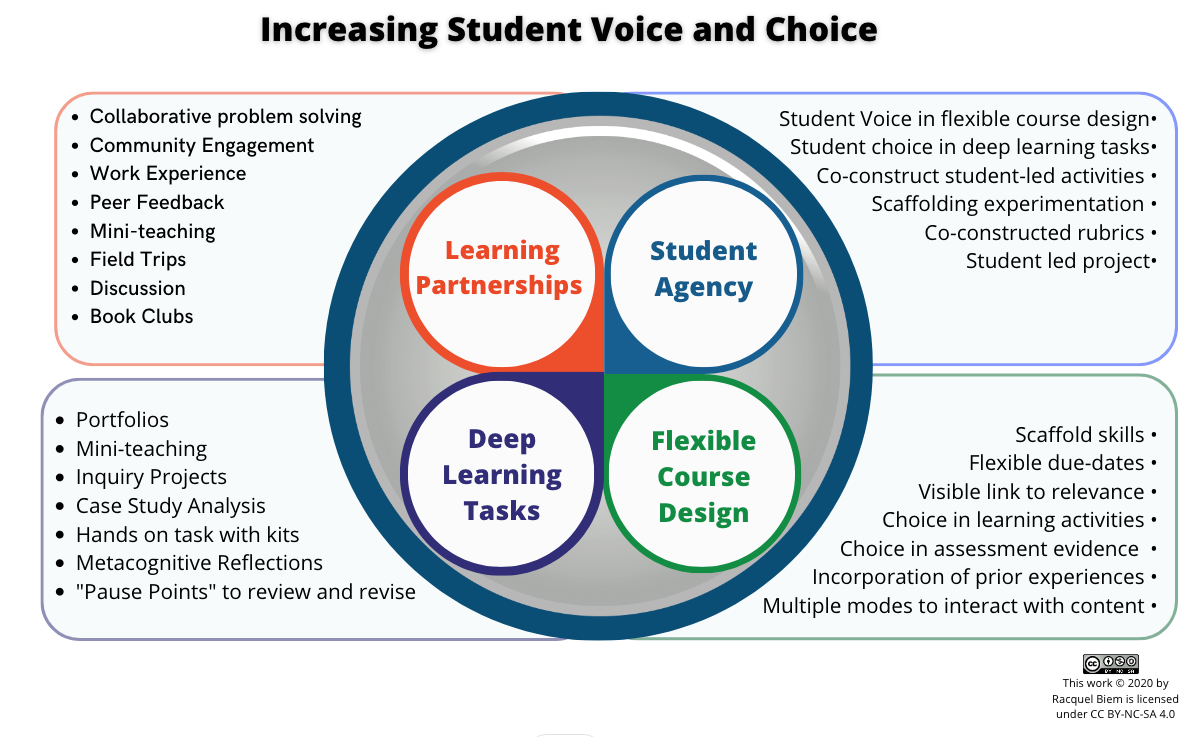What Are Open Educational Practices in Our Context?
We have seen significant growth in the use of open educational resources at the U of S in the past six years. As of this fall, more than a dozen open textbooks have been created or adapted at by instructors and students have saved well over $2 million dollars. “Open”, however, is about more than just textbooks and money saved, it’s about a way of thinking about teaching and learning.
This is the first in a serious of posts looking at the integration of open educational practices (OEP) already occurring at the U of S, as well as about the potential for integrating OEP into courses and programs across the institution. To start, what are OEP in the context of teaching and learning at the U of S during this time of COVID-19 where most of our courses are happening remotely.
OEP at the U of S in this context may include:
Materials are accessible
Open educational resources (OER) are freely available and shareable, increasing the access to the materials. Accessible also means that they should be available for those with differing abilities (e.g. use a screen reader) and for those who may not have access to higher-end technology, including high-speed internet.
Anyone can create, collaborate on, and share the materials
The principles of open not only allow, but rely on the ability for anyone to create / modify, collaborate and share materials. Examples of this include instructors collaborating on an adaption of an existing open textbook to better meet the needs of their students, and students engaging in the creation of learning materials to demonstrate their understanding of a concept (open pedagogy).
There are choices for the creator of materials as to what they will create and how they will share Whoever creates the materials may decide on the license they wish to put on their materials, which allows them to dictate how the materials may be used, changed, and shared. In addition, choice means providing creators / adaptors of materials, including students, to determine the format for the materials that they create. For example, for a particular assignment, students may be given the option of writing a paper, updating a Wikipedia article, or creating a poster for presentation
Making research data and publications available for everyone to access, use, and build upon
As most research is publicly funded, the data and results should, ideally, be made freely available to the public. In addition, such sharing of data and results allows for greater collaboration in addressing major issues facing the world such as COVID-19, environmental challenges, inequality, etc. This sharing and collaboration may happen with instructors, graduate, or undergraduate students (undergraduate research).
Reflecting on teaching and learning so that others may learn from our experiences
Reflecting on what has worked and what hasn’t in our teaching and learning allows us to learn from our successes and mistakes. Sharing those reflections with others through publications, blogs, and conversations allows others to learn from our experiences and the opportunity to offer us both support and potential solutions to problems.
Support is available to help you engage in open educational practices
If you have questions about open educational practices (OEP) or need help finding open educational resources (OER) contact:
- The Gwenna Moss Centre or Heather M. Ross directly
- The Distance Education Unit if you are working with them on a course(s) where you would like to integrate OER or other OEP
- The Library as your Library liaison may be able to help you find resources


One Comment
Pingback: